Buddha in home decor
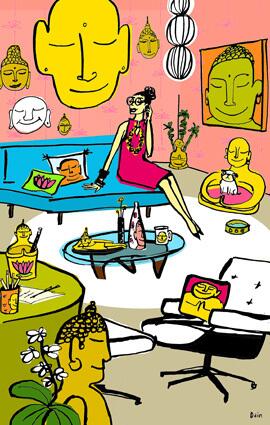
How did Buddha become such a ubiquitous element in Southern California homes, regardless of ones faith? The figure has become visual shorthand for Zen décor and soothing interior design serenity sold off the shelf. Religious leaders are glad non-Buddhists have embraced the figure, but some followers also wonder whether Buddhamania has gone too far, reducing a sacred symbol to a decorating tchotchke.
Also in Home & Garden
• Creating a no-dig garden
• Pizza and a movie, all grown up
• Would Frank Lloyd Wright approve?
• Buddha in home decor
•
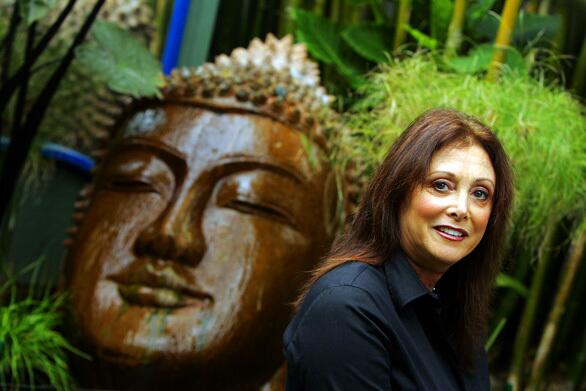
Interior designer Susan Cohen incorporates several Buddhas in her Santa Monica home, including a cast-resin piece in her backyard. The statue is part of a landscape that includes bamboo, Japanese elms and other Asian elements. After going to Bali I was inspired to bring back that calming energy, she says. Though not a Buddhist, she says the history and spirituality behind the objects give her a sense of inner peace.
Also in Home & Garden
• Creating a no-dig garden
• Pizza and a movie, all grown up
• Would Frank Lloyd Wright approve?
• Buddha in home decor
•
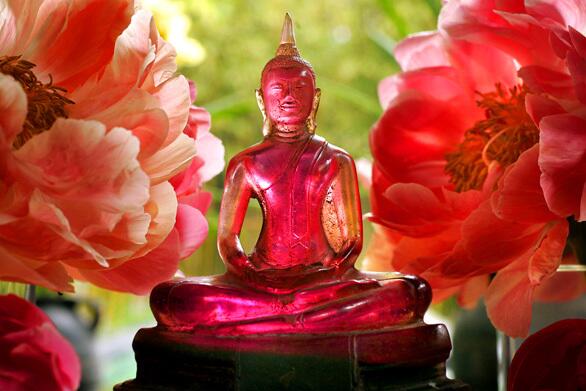
Cohen refers to this piece, given to her as a gift, as her roving Buddha because she places it in different spots in the house. In the kitchen windowsill, I usually like to surround it with orchids, she says, and I love the way light shines through it.
Also in Home & Garden
• Creating a no-dig garden
• Pizza and a movie, all grown up
• Would Frank Lloyd Wright approve?
• Buddha in home decor
•
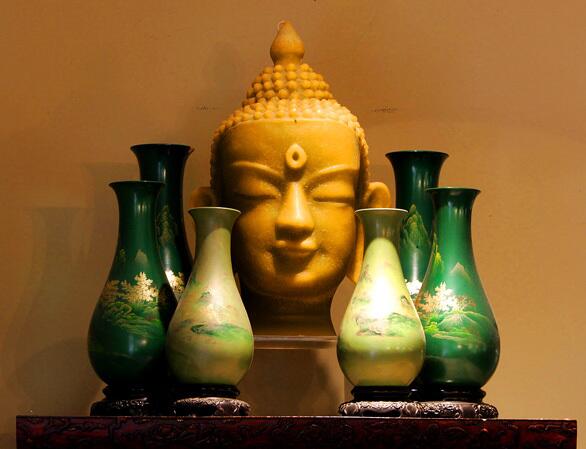
A Buddha candle in Cohens bedroom is surrounded by porcelain vases once owned by Tony Duquette and bought at the legendary designers estate auction.
Also in Home & Garden
• Creating a no-dig garden
• Pizza and a movie, all grown up
• Would Frank Lloyd Wright approve?
• Buddha in home decor
•
Advertisement
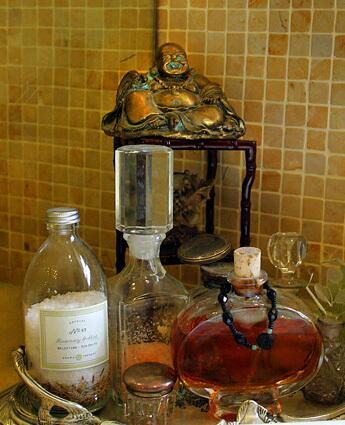
The trend, designers and consumers say, is driven by the desire for the peace and serenity that the Buddha statues symbolize. Here in Cohens bathroom, a Buddha by the tub.
Also in Home & Garden
• Creating a no-dig garden
• Pizza and a movie, all grown up
• Would Frank Lloyd Wright approve?
• Buddha in home decor
•
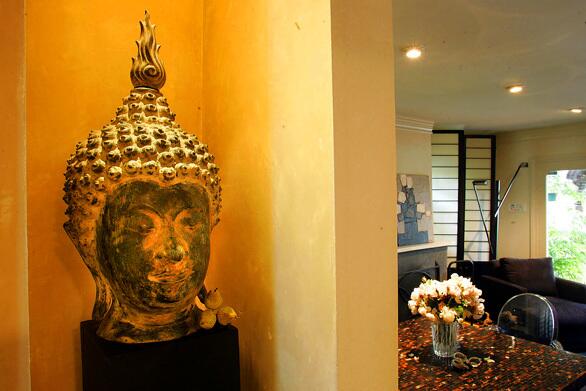
In a hallway leading to her family room, Cohen removed a bookshelf from a niche to make room for a bronze Buddha head from Thailand set atop a pedestal.
Also in Home & Garden
• Creating a no-dig garden
• Pizza and a movie, all grown up
• Would Frank Lloyd Wright approve?
• Buddha in home decor
•



